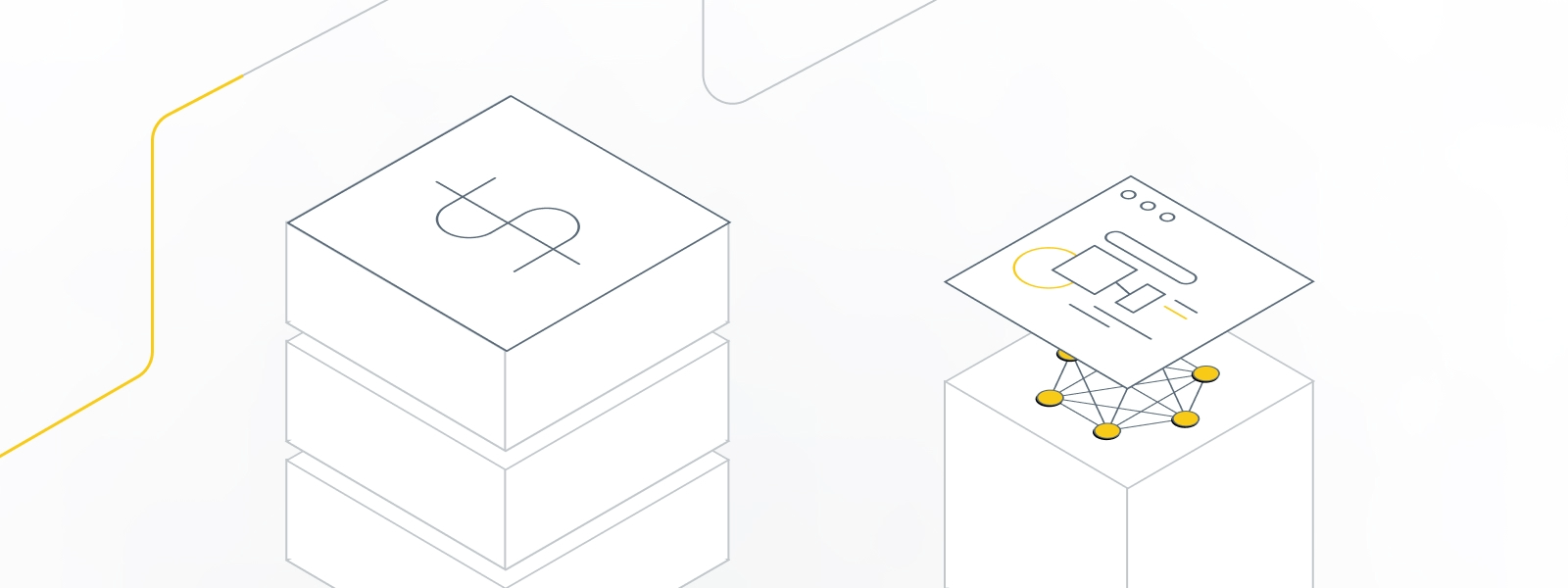Tech
Website vs. Web App: 8 Key Differences
Are websites and web apps really that different? Find the digital strategy that fuels your business growth from sleek simplicity to interactive power.

In our lives online, the lines between websites and web applications can often blur. While both serve as pivotal digital interfaces, their purposes, structures, and user engagements are distinct. Let's explore the differences between a website and a web application to give you a clearer understanding.
Since the early days of the web in the early 1990s, websites have evolved from simple, text-based pages into complex, visually engaging, and interactive digital platforms. Today, there are over a billion active websites, and each one caters to the needs of its target audience. They range from personal blogs to colossal e-commerce platforms catering to millions of customers worldwide.
Static websites are collections of interconnected web pages grouped under single domains. This allows users to navigate seamlessly from one page to another, gathering information, consuming content, or simply exploring informational websites. Websites are the touchpoints where businesses and individuals create their digital identities, ensuring they are accessible.

The beauty of a website lies in its versatility. For companies, it's a tool to establish brand identity, promote the business, and engage with customers. An effective website can offer a user experience that mirrors the brand’s values, fostering trust and loyalty among visitors. For individuals, websites can be personal portfolios, diaries, or platforms to share thoughts, expertise, and creations with a wider audience.
Having a website is not just a luxury but a necessity. It’s the first place a client, employer, or collaborator will look to understand who you are or what your business represents. With search engines like Google, users have become accustomed to instantly accessing information with just a few clicks.
Websites ensure that when someone searches for a topic or service related to your domain, they find you. Web developers have refined ways to build websites and lay out web pages to maximize goals like filling forms or completing online purchases.
Of course, not all websites are created equal. Various factors like design, layout, content, and usability play a crucial role in determining a website's success. A well-designed website with clear content and an intuitive layout can significantly enhance user engagement. Cluttered websites with confusing navigation can deter users, leading to lost opportunities.

Websites are essentially digital brochures. They serve to inform, educate, or advertise their content to visitors. Think of a restaurant menu: it lists dishes available, but the offerings don’t change unless the menu is physically updated. Similarly, whether you’re browsing a travel blog or a company landing page, the primary content remains static. While the graphics and aesthetics might be appealing, the core message remains unchanged, offering a consistent message to every visitor.
Just as web content appears as a digital brochure, website visitors behave like they're in museums. Websites showcase content for visitors to view and appreciate, and interaction is minimal. You observe and move on. Of course, there are exceptions. A contact form invites user queries, while a comment section can spark discussions. However, predominantly, the user’s behavior doesn’t reshape or redefine a website’s primary content.

Navigating a website is straightforward. It's designed to be intuitive, ensuring that even first-time visitors can easily find their way around visual and textual content. The structure of a website should have a table navigation menu guiding users to interlinked web pages. While some websites might employ sophisticated designs for aesthetic appeal, the inherent complexity remains low.
This ensures that the message is conveyed without overwhelming the visitor. Overly complex web pages tend to discourage users and can lead them to bounce, or leave the page without interacting with any of the page content.
When we talk about business logic in modern websites, it’s mostly about determining what content should be presented and how. Business goals play a key role in what functionalities a website should have. For instance, an e-commerce site might use an algorithm to showcase trending products on its homepage.
Advanced websites could employ A/B testing to decide which version of a page garners better user engagement. However, the primary objective remains content presentation, without complex functionality or dynamic data processing typical of web apps.

Imagine a popular tourist spot. Every visitor, irrespective of where they come from, views the same landmark. Websites function similarly. They offer a uniform experience to all visitors. Whether it’s the breaking news on a media portal or the latest collection on a fashion store, every visitor is presented with the same content, ensuring consistency and a unified brand message.
Today creating a website is as straightforward as ever. Platforms like WordPress and Wix have democratized web development, offering drag-and-drop solutions. For those looking at more customized, yet static solutions, static site generators like Jekyll or Hugo come to the rescue. With a plethora of templates and plugins available, individuals and businesses can craft aesthetic and functional websites without delving deep into coding.
No-code and low-code solutions also offer ways for people to create a simple website, depending on business goals. For more complex sites, website developers can design and program a site to behave consistently.

Websites are quite accommodating when it comes to modifications. Think of them as digital canvases, where content can be painted, erased or redesigned completely. Using content management systems (CMS), changes can be previewed and published in real-time. Whether it's a typo correction, a banner update, or a blog addition, deployments are usually hassle-free, without the need for rigorous testing phases that web apps often demand.
Given their less dynamic nature, websites are less resource-intensive. Most websites can comfortably run on shared hosting platforms, which distribute server resources across multiple sites. This shared model not only ensures optimum resource use but also translates to cost-effectiveness. Consequently, individuals and small businesses can maintain an online presence without incurring hefty operational costs.
Beyond the static pages of the internet, the world of web applications, or web applications, offers a dynamic playground where user interaction meets real-time functionality. A web app is a more sophisticated online tool designed not just to inform, but to perform specific tasks, respond, and adapt to user input. They use server-side processing to run on a user's web browser to serve content and adapt to input.
From their humble beginnings, where they merely mimicked their desktop counterparts, web applications have become powerful, platform-independent tools that offer capabilities once thought impossible within the confines of modern browsers. From intricate project management and web application development tools to expansive social media platforms, and e-commerce storefronts to immersive gaming experiences, web apps have redefined how we interact on the internet.

A web app, is a dynamic website driven by data and user interaction. It breaks away from the conventional "read-only" approach of traditional websites, empowering users to actively engage with the content. This two-way interaction, tailored experiences, and real-time responsiveness make web applications an integral part of our daily digital interactions.
Businesses and creators have found value in web apps. For enterprises, they facilitate operations, from streamlining internal workflows with tools like CRMs and ERPs, to directly engaging customers through an online store, marketplaces and tailored service portals. The ubiquitous nature of the web ensures that these apps are accessible from a variety of devices, bridging gaps and bringing efficiency.
For users, web apps are more convenient and adaptable. Think of your online banking portal, where you can view your balance, transfer funds, or even apply for loans without stepping into a physical branch. Or consider social media platforms, where you can share moments, connect with friends, and explore communities, all tailored to your preferences and interactions. These tailored experiences, which adjust and evolve based on user input, showcase the utility of web apps.
Yet, crafting an effective web app requires a blend of design, functionality, and user experience. Unlike traditional websites that primarily present information, web applications must balance aesthetics with performance, ensuring that while they deliver powerful functionalities, the user journey remains intuitive and engaging.
In the sections that follow, we'll dive deeper into the intricate world of web applications, shedding light on their characteristics, the technology stack powering them, web design, and the design principles that drive user engagement.
In a world that craves instant results, personalized experiences, and seamless interactions, web applications stand tall as the flagbearers of digital innovation, heralding an era where users are not just passive consumers but active participants in their digital journeys.
Web apps have a much broader scope and are the shapeshifters of the web. Their content morphs and redefines itself based on user input or real-time data. Consider an online banking portal: your account balance, transaction history, and loan eligibility all dynamically adjust based on your financial activities.
E-commerce platforms where product availability, pricing, and even recommendations transform based on inventory, demand, and user behavior may also change based on user data and site preferences. This dynamic and responsive nature of quality content ensures a tailored experience for every user, every time.

Web apps are the epicenters of digital interaction. Unlike passive content consumption on websites, web apps invite, encourage, and often require user engagement. For instance, an email client isn't just about reading messages, it’s about composing, organizing, flagging, and even scheduling them. Interactive elements like user profiles, personalized dashboards, and real-time notifications further elevate the interactive element, transforming users from spectators to active participants.
Crafting a web app is a meticulous orchestration of visual and text content. It's like assembling a sophisticated piece of machinery, where every cog, wheel, and lever has a definitive purpose. Ensuring data encryption, facilitating seamless user sessions, integrating with third-party services via APIs, and ensuring fast but secure data transactions, are just a few layers of the manifold complexities that define web application development.

The heart of every web application beats with its business logic. It's this logic that decides how a 10% discount code is applied on an e-commerce site, or how a fitness app determines and adjusts a user's exercise regime based on their progress and preferences. Whether ensuring the correct tax calculation on a checkout page or facilitating a multi-player game's rules and scoring, the embedded business logic is what makes a web app functional and valuable.
Web apps can be visualized as multi-storied digital buildings, housing numerous users but offering each one a unique room with a distinct view. While they cater to a vast user base, can deliver personalized experiences. That's why, when you log into a social media platform, your feed, friend suggestions, and even ads are tailored to your interactions and preferences, distinct from any other user.

The construction of web apps is a mix of several programming languages, each contributing to a harmonious user experience. While databases like SQL or MongoDB store and manage data, backend frameworks like Django or Express.js handle the app's logic and server-side operations.
Additionally, front-end technologies ensure a responsive and engaging interface. Given the plethora of functionalities a web application offers, the effective use of diverse tech tools becomes essential.
The intricate fabric of web apps mandates a cautious approach to modifications. Any change, no matter how minuscule, can ripple across the app, affecting functionalities. Hence, updates or additions often follow a thorough testing regime, ensuring that the user experience remains unhindered. Techniques like Continuous Integration (CI) and Continuous Deployment (CD) have become industry standards, ensuring that every code modification integrates seamlessly and deploys efficiently.

The dynamism and interactivity of web applications come with a cost. They demand robust servers capable of handling numerous simultaneous user interactions, ensuring speed and security. Additionally, the evolving nature of user needs and the digital ecosystem necessitates frequent updates and patches. Add to that the requirement for a dedicated team to oversee and manage these aspects, and it's evident that maintaining a web application is a significant investment, both in terms of finances and efforts.
Both websites and web applications play essential roles in the digital landscape. While websites are the go-to platforms for static content and broad reach, web applications provide dynamic, interactive experiences tailored to individual users. Your choice should align with your objectives and the experience you wish to provide your audience. Remember, as with all tech decisions, it's not just about the initial setup but the long-term commitment and adaptability.
Partner with world-class experts who understand your challenges, deliver seamless solutions, and support you every step of the way.